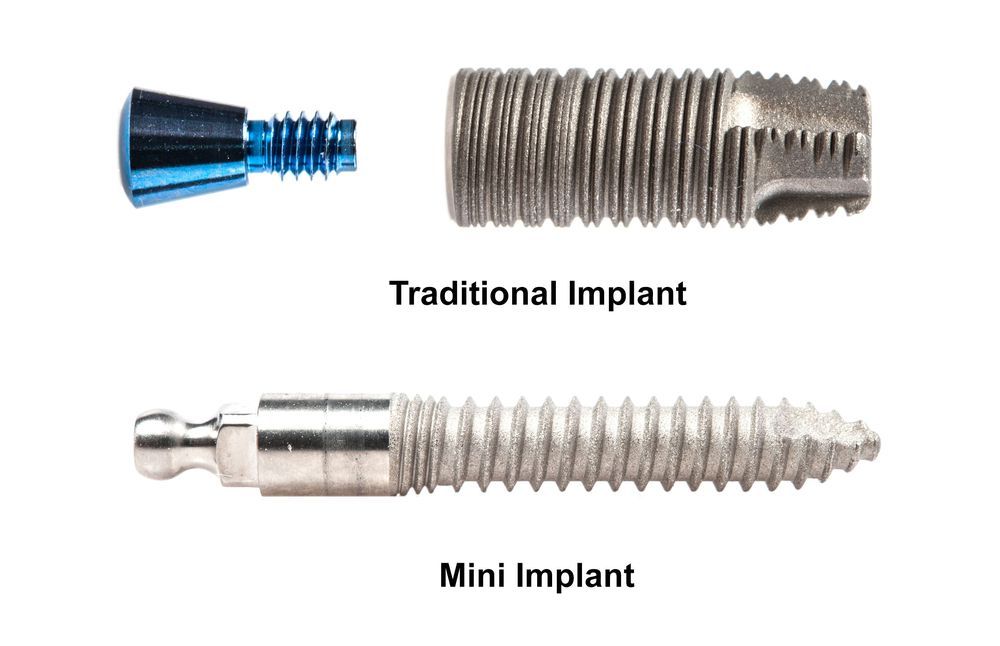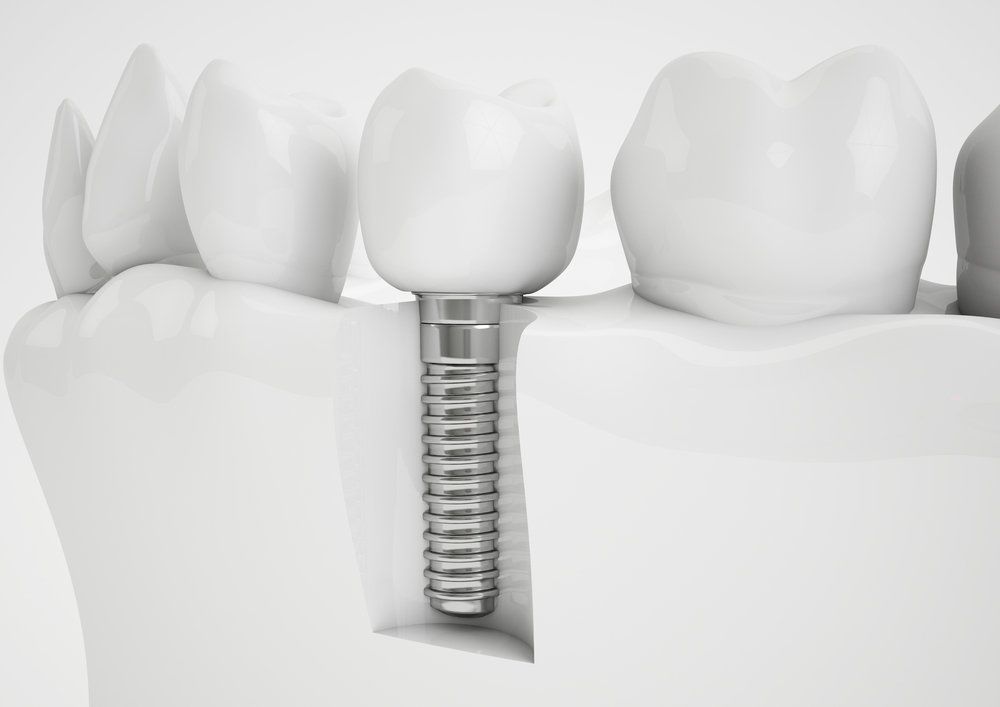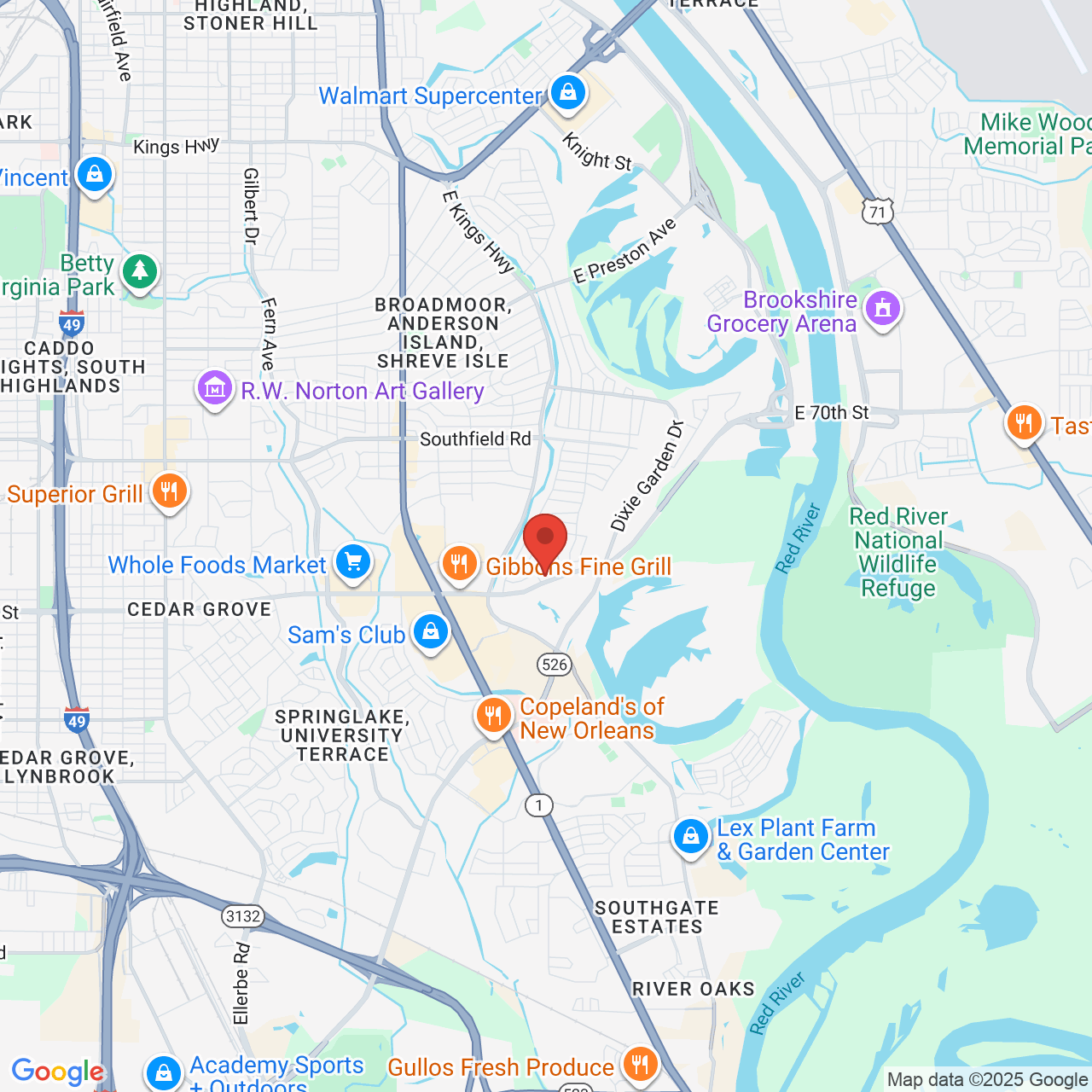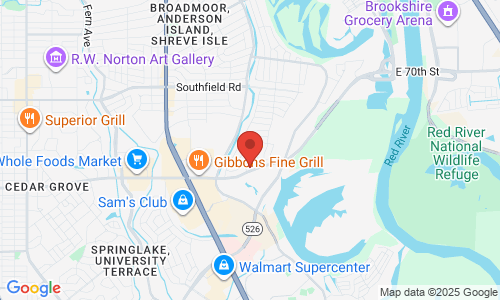Mini Dental Implants vs. Traditional Implants

There are several types of dental implants that can be used to replace missing teeth, including standard and mini implant posts. Traditional implants are larger than mini implants and provide a more stable, long-term solution. However these implants also require sufficient jawbone tissue for support. Patients with jawbone atrophy may not qualify for traditional implants without a preliminary bone graft. Fortunately, mini implants provide a solid alternative. Smaller in diameter, mini implants do not require as much healthy tissue and can restore a single tooth or an entire dental arch without the need for preliminary treatment. Your dentist can review the differences between mini dental implants vs. traditional implants at your initial consultation.

Understanding the Differences
In conjunction with implant-supported restorations, mini dental implants and traditional implants replace missing teeth. The implant posts act as synthetic tooth roots and help to keep the jawbone strong and healthy. Depending on the extent of tooth loss, both options can stabilize custom crowns, bridges, or dentures. Though traditional and mini implants serve the same function, there are important differences to consider.
Size
Mini dental implants are significantly smaller in diameter than traditional posts. Whereas a standard post ranges from 3.5mm to 6mm, a mini implant can be anywhere from 2mm to 3.5mm wide. Because of their size, mini implants have less impact on the jawbone and require less bone for support. However, keep in mind that smaller posts may not be as stable as larger posts. As a result, minis can pose a higher risk of implant failure.
Shape
Traditional implants feature two pieces: a post and an abutment. The abutment serves to connect the implant to the restoration. A mini implant, on the other hand, is a solid one-piece screw. It consists of a post and a ball-shaped end that rises above the gum line. Restorations crafted for mini implants are fabricated with a rubber O ring that fits around the ball.
Candidacy
To qualify for traditional dental implants, you must have a strong and sturdy jawbone, as well as sufficient space for implants to reside. Jawbone atrophy can compromise the success of your treatment, causing implants to weaken or fail altogether. If you have sustained bone degeneration after tooth loss, you may require a preliminary bone graft to restore the integrity of your jaw before undergoing traditional implant treatment. You may also need a sinus lift if bone recession has affected the height of your sinus floor.
Patients with a receding jawbone may be eligible for mini implants.
In comparison to their full-sized counterparts, mini implants do not require as much jawbone tissue for support. Patients with a receding jawbone may be eligible for mini implants without the need for preparatory procedures. However, because minis are not as strong as larger posts, they may not be appropriate for patients who struggle with teeth grinding and clenching (bruxism). Bruxism can place enormous pressure on teeth, and over time, the force can weaken mini implants.
Placement
Mini implants can often be placed in a single office visit, without the need for sutures. Traditional implants, on the other hand, require two procedures. The first surgery is more extensive than that of mini implants, as your doctor must create a larger pilot hole for the implant posts. The second surgery is minor and involves uncovering the post and attaching the abutment.
Recovery and Restoration
If you require a preliminary bone graft or sinus lift, you must wait six to nine months for your jaw to heal before implants can be placed. After traditional implant surgery, you must wait an additional three to six months for the posts to integrate with surrounding tissue before you can receive your restoration.
As mini dental implants do not typically require a preliminary procedure, the treatment timeline is reduced significantly. In many cases, patients can also receive temporary restorations on the same day as treatment. With same-day restorations, patients can leave the office with renewed dental function and a well deserved boost in confidence.
Cost
Mini implants usually cost less than traditional posts because they are smaller and made with less material. However, keep in mind that you may need more mini implants to support a larger restoration. As a result, it is important to consider the complexity of the treatment, the materials used, and your dentist's experience when calculating the cost.







